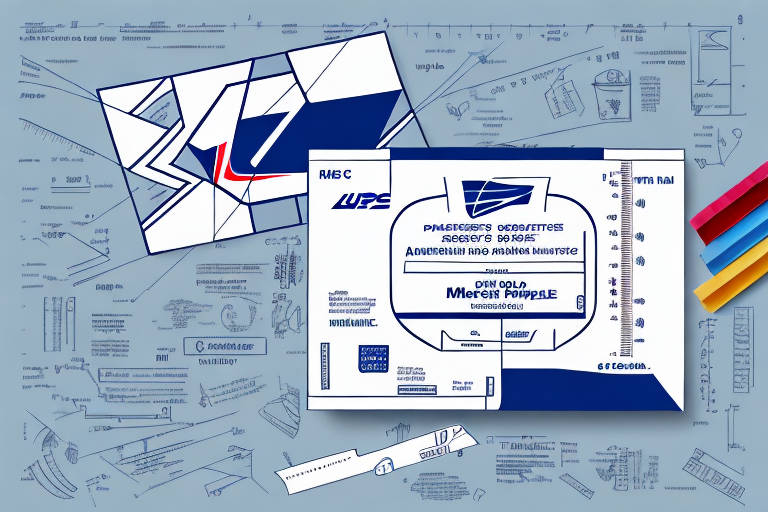Why USPS Package Dimensions Matter
Understanding USPS package dimensions is crucial for both cost-efficiency and ensuring timely delivery. The United States Postal Service (USPS) employs a pricing model based on dimensional weight, which calculates shipping costs based on the amount of space a package occupies rather than its actual weight. This means that larger, lighter packages may cost more to ship than smaller, heavier ones.
For example, a package that is 20 inches in length, 15 inches in width, and 10 inches in height may incur higher shipping fees compared to a smaller package with the same weight. Accurately measuring your package ensures you choose the right packaging, avoid unexpected fees, and select the most suitable shipping method.
Additionally, oversized packages might require special handling, potentially leading to longer delivery times. By understanding and adhering to USPS size guidelines, you can ensure your packages are delivered efficiently without unnecessary delays.
The Importance of Accurate Measuring for USPS Packages
Accurate measurement of your packages is essential to prevent additional fees, delivery delays, or even the return of your package. Incorrect dimensions or weight can lead to your package being classified under the wrong shipping category, resulting in unexpected costs.
Key Points:
- Use a reliable digital scale to measure the weight of your package precisely.
- Measure all sides of the package, including any bulges or protrusions, to determine the correct dimensions.
- Double-check measurements, especially for irregularly shaped packages, to ensure accuracy.
Using accurate measurements not only helps in calculating the correct shipping cost but also ensures compliance with USPS regulations, thereby avoiding any potential shipping issues.
How to Measure Your USPS Package Correctly
Properly measuring your package involves determining its length, width, and height. Follow these steps to ensure accurate measurements:
- Measure the Length: Identify the longest side of the package.
- Measure the Width: Determine the widest side perpendicular to the length.
- Measure the Height: Measure the side perpendicular to both the length and width.
For irregularly shaped packages, measure the widest points in all three dimensions and use the largest measurements to calculate dimensional weight. The formula used by USPS for dimensional weight is:
Dimensional Weight (lbs) = (Length × Width × Height) ÷ 166
Ensure all measurements are rounded up to the nearest inch to avoid misclassification.
Common Mistakes to Avoid When Measuring USPS Packages
- Ignoring Packaging Materials: Always measure the package with all packing materials included, such as bubble wrap or packing peanuts.
- Failing to Round Up: Round all measurements up to the next whole inch to ensure accurate dimensional weight calculation.
- Incorrect Weight Measurement: Ensure the package is weighed accurately using a digital scale, considering the weight of all contents and packaging materials.
- Using Inadequate Packaging: Choose packaging that is sturdy enough to protect the contents without adding unnecessary bulk or weight.
Avoiding these common mistakes will help streamline the shipping process, reduce costs, and ensure your packages arrive safely and on time.
USPS Package Size and Weight Restrictions
USPS enforces specific size and weight restrictions to maintain efficiency and safety in package handling. Understanding these limitations is essential to ensure your package qualifies for the desired shipping service.
Weight Limits
The maximum weight allowed for a single USPS package is 70 pounds. Packages exceeding this weight must be split into smaller parcels or consider alternative shipping methods.
Size Limits
For most USPS services, the maximum combined length and girth (where girth is defined as twice the width plus twice the height) is 130 inches. Exceeding these dimensions may require special handling or different carriers.
Prohibited Items
USPS restricts the shipment of certain items, including hazardous materials like explosives and flammable liquids. Perishable items and live animals also have specific packaging and labeling requirements. Always consult the USPS ShipSafe guidelines before shipping restricted items.
USPS Pricing Based on Package Dimensions
USPS shipping costs are influenced by both the weight and dimensions of your package. Utilizing the dimensional weight pricing model ensures that the space your package occupies is factored into the cost.
Factors Affecting Pricing:
- Package Dimensions: Larger packages incur higher shipping fees due to the space they occupy.
- Shipping Distance: Longer distances typically result in higher costs.
- Shipping Speed: Faster shipping options, such as Priority Mail Express, cost more than standard services.
To estimate your shipping costs accurately, use the USPS Postage Price Calculator. This tool allows you to input your package dimensions and weight to receive an estimated shipping cost across various USPS services.
Understanding Dimensional Weight for USPS Packages
Dimensional Weight is a pricing technique used by USPS and other carriers to account for the volume a package occupies in relation to its actual weight. This ensures that large, lightweight packages do not consume excessive space during transport.
Calculating Dimensional Weight
To calculate the dimensional weight for USPS, use the following formula:
Dimensional Weight (lbs) = (Length x Width x Height) / 166
For example, a package measuring 20 inches in length, 15 inches in width, and 10 inches in height would have a dimensional weight of:
(20 x 15 x 10) / 166 ≈ 18 lbs
If the actual weight exceeds the dimensional weight, USPS will charge based on the actual weight. Otherwise, the dimensional weight determines the shipping cost.
Understanding this concept helps ensure you select the most cost-effective shipping method and avoid unexpected fees.
Tips for Reducing the Size and Weight of Your USPS Packages
Optimizing the size and weight of your packages can lead to significant shipping cost savings. Here are some strategies to consider:
Use Compact Packaging
Select the smallest box or envelope that comfortably fits your items with adequate padding. This minimizes dimensional weight and reduces shipping costs.
Lightweight Materials
Opt for lightweight packaging materials like poly mailers or padded envelopes instead of heavier boxes when appropriate.
Distribute Weight
If shipping multiple items, consider splitting them into separate packages to stay within size and weight limits.
Efficient Packing
Arrange items snugly to eliminate excess space, using minimal padding to protect contents without adding unnecessary bulk.
Implementing these tips can help you manage shipping expenses effectively while ensuring your packages remain secure during transit.
How to Choose the Right Packaging for Your USPS Shipment
Selecting the appropriate packaging is essential to protect your items and optimize shipping costs. Here are some guidelines to help you choose the best packaging:
Type of Items Being Shipped
Fragile items require sturdy boxes with ample cushioning, such as bubble wrap or foam peanuts, to prevent damage. Non-fragile items can be shipped in lighter packaging like poly mailers.
Size and Weight Considerations
Choose packaging that closely matches the size of your items to avoid excess dimensional weight. For heavier items, ensure the box is strong enough to support the weight without tearing.
USPS Packaging Options
USPS offers a variety of free packing supplies, including Priority Mail boxes and envelopes. Utilizing these can sometimes qualify you for discounted shipping rates.
Environmental Impact
Consider eco-friendly packaging options such as recyclable or biodegradable materials. This not only reduces environmental impact but can also appeal to environmentally conscious customers.
By carefully selecting the right packaging, you can enhance the safety of your shipments and manage your shipping costs effectively.
The Difference Between Domestic and International USPS Package Dimensions
Shipping domestically within the United States and internationally involves different packaging requirements and restrictions. Understanding these differences is vital to ensure compliance and avoid shipping issues.
Domestic Shipping
For domestic shipments, USPS allows packages up to 70 pounds and a maximum combined length and girth of 130 inches. Most domestic services, such as Priority Mail and First-Class Mail, adhere to these standards.
International Shipping
International shipments have varying size and weight restrictions depending on the destination country and the specific service used. Typically, the maximum weight is lower than domestic limits, and size restrictions can be more stringent. Additionally, international packages must comply with customs regulations, which include accurate labeling and documentation of contents.
Customs and Documentation
When shipping internationally, it's essential to complete the necessary customs forms accurately. This includes declaring the contents, value, and purpose of the shipment. Inaccurate or incomplete documentation can lead to delays, additional fees, or even the return of the package.
For detailed information on international shipping requirements, refer to the USPS International Mailing Services.
How to Properly Label Your USPS Packages with Dimensions
Proper labeling is a critical step in the shipping process, ensuring that your package is handled correctly and reaches its destination without issues. Follow these guidelines to label your USPS packages accurately:
Visible and Clear Labels
Ensure that all labels, including shipping addresses and return addresses, are clearly written or printed. Use a dark ink on a light background for maximum readability.
Include Dimensions and Weight
While USPS does not require dimensions to be printed on the label, having this information can be helpful for your records and in case of any disputes. Ensure the weight is accurately recorded during the shipping process.
Use Correct Label Placement
Place the shipping label on the largest side of the package, away from any seams or openings, to prevent it from being obscured or damaged during transit.
Avoid Obstructions
Do not cover any part of the label with tape or other materials. Ensure all barcode areas are unobstructed to allow for scanning.
Secure the Label
Attach the label firmly using clear tape or adhesive, ensuring it stays in place throughout the shipping process.
Proper labeling not only facilitates efficient handling by USPS but also reduces the risk of your package being lost or delayed.
Conclusion
Understanding USPS package dimensions is essential for anyone who regularly ships items through this service. By accurately measuring your packages, selecting appropriate packaging, and adhering to USPS guidelines, you can ensure cost-effective and timely deliveries. Additionally, being aware of common mistakes and utilizing USPS tools like the Postage Price Calculator can further optimize your shipping process.
Staying informed about USPS policies and continuously refining your shipping practices will lead to a smoother and more efficient experience, benefiting both you and your recipients.






















